|
||||||||||||||||||||||||||||||||||||||||
|
||||||||||||||||||||||||||||||||||||||||
|
||||||||||||||||||||||||||||||||||||||
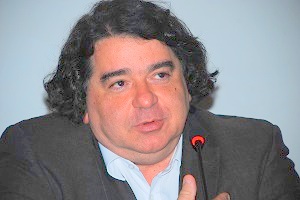
On May 6th, at the Naval School of Rio de Janeiro, the Brazilian Academy of Sciences (ABC) held the tenure ceremony of its new members, elected in a process of nomination and evaluation by their peers, performed throughout 2013. In the event, 24 scientists were assigned as full members of ABC. Among those, in the field of Physical Sciences, there was Professor Fernando Lázaro de Freire Junior, Materials researcher and former president of SBPMat.
Contemplating the ideia of being a researcher, Fernando Lázaro chose to graduate with a Bachelor’s degree in Physics by the Pontifical Catholic University of Rio de Janeiro (PUC-RIO), earning it in 1978. In 1979, he started teaching in the same university, while attending his Master’s (1979-1981) and Doctorate (1981-1985) courses in Physics there. During his graduate studies, Fernando Lázaro made his first scientific interventions in the field of Materials by means of an ion accelerator, initially used by him for works in Atomic Physics. In 1998, he went to Università degli Studi di Padova (in Italy) for his Postdoctoral studies, working with materials surfaces and interfaces.
From 2003 to 2008, he was the Director of PUC-Rio’s Physics Department. From 2008 to 2012, he coordinated the field of Physics and Astronomy in the Research Foundation of the State of Rio de Janeiro (FAPERJ). In Europhysics Letters (a journal from the European Physical Society), Professor Lázaro worked as coeditor between 2006 and 2010, and advisory editor from 2010 to 2013. In SBPMat, he served two consecutive terms as president, two as scientific director and one as financial director.
Currently, Fernando Lázaro is a Full Professor in PUC-Rio and director of Centro the Brazilian Center for Research in Physics (CBPF), in addition to being a member of the FAPERJ’s Higher Board and coordinator of the National Institute of Surface Engineering. Author of over 170 scientific articles, with more than 2500 citations, he is a level 1A researcher in the Brazilian National Research Foundation, CNPq. Among his most relevant papers, there are several studies on carbon-based materials: DLC (diamond-like carbon) films, nanotubes and, more recently, graphene.
Following there is a brief interview with the researcher.
SBPMat newsletter: – Tell us a little about your history: what led you to become a scientist and work in the field of Materials?
Fernando Lázaro: – I always enjoyed Physics and Mathematics during high school, but in 1974 I had no ideia, when I applied for college entrance exams, that it was possible to do research in Brazil. Because of this, I took the exam to major in Electrical Engineering in PUC-Rio, and only there I realized that it was possible to perform researches in the field of Physics, in Brazil. Then, I transferred myself to the Bachelor’s in Physics, which was easier, as in 1975 PUC-Rio already had a common Basic Cycle for the whole of its Scientific and Technical Center. So, I didn’t waste any time. I was in my second year in the undergraduate studies. My graduate studies, then, still in PUC-Rio, were in Atomic Physics, using an ion accelerator as a working tool. As such accelerator was also a great tool to analyze materials, it was through this path that I entered into the field of Materials.
SBPMat newsletter- What do you consider as your main contributions to the field of Materials?
Fernando Lázaro: – My research has always been conducted in collaboration with several colleagues and students, and I think we made an important contribution to the study of nanostructured carbon films (diamond-like carbon films, DLC), as attested by the papers with a high number of citations and all the invitations to be invited lecturer in many international congresses. It is evident that supervising students has been important too, as well the management positions in PUC-Rio, CBPF and SBPMat.
SBPMat newsletter: – Choose some of your more highlighted papers, and comment on them, if possible.
Fernando Lázaro: – My most cited paper is an article in Applied Physics Letters, published in 1992, coauthored by Carlos Achete, from COPPE/UFRJ, and Dante Franceschini, currently at UFF, on the nitrogen incorporation in DLC films [Franceschini, D. F. ; Achete, C. A. ; Freire Junior, F. L. Internal Stress Reduction By Nitrogen Incorporation In Hard a-C:H Thin Films. Applied Physics Letters, New York, v. 60, p. 3229-3231, 1992]. It was released at the right time, and offered a relevant result for the issue of the applications of such materials, namely, the decrease of the internal tension of the film (an important factor in the debonding of films from the substrates), without a significant change in its hardness.
SBPMat newsletter: – In your opinion, what are the main challenges in your current research field for Materials Science and Engineering?
Fernando Lázaro: – I have been working with graphene and carbon nanotubes. For both, the production of good quality samples, in a controlled and profitable form, still represents a great obstacle for the use of those materials in a broader way than the one that has been verified up to this point.
SBPMat newsletter: – Send a message to our readers who are starting their careers as scientists.
Fernando Lázaro – An encouraging message. The material working conditions nowadays are much better than when I started, three decades ago; the same can be said about the wages in academia. So, things have improved and tend to keep getting better, and I think it is feasible to conduct good quality researches, with an international impact, in Brazil.
A Assembleia Geral da Academia Brasileira de Ciências (ABC) elegeu 36 cientistas de excelência para integrar seus quadros como Membros Titulares e Membros Correspondentes. A cerimônia de posse ocorrerá no dia 7 de maio de 2013.
Entre os membros titulares eleitos, há três presidentes da Sociedade Brasileira de Pesquisa em Materiais (SBPMat): Roberto Mendonça Faria (USP), que é o presidente atual; José Arana Varela (Unesp), presidente de 2010 a 2011, e Elson Longo da Silva (Unesp), que presidiu a sociedade de 2004 a 2005. Os dois primeiros foram eleitos na área de Ciências Físicas e o terceiro, em Ciências Químicas.
Os novos membros da ABC foram eleitos em um processo de indicação e avaliação por pares que envolveu os membros titulares da academia.
Veja aqui notícia no site a ABC com a lista completa dos membros eleitos neste ano.
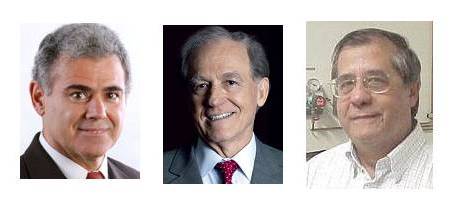
Sergio Mascarenhas Oliveira será o segundo cientista honrado com a “Memorial Lecture Joaquim Costa Ribeiro”, honraria instituída pela SBPMat em 2011 em homenagem ao brasileiro Joaquim Costa Ribeiro, pioneiro nas pesquisas de fronteira na área de Materiais. A primeira palestra foi concedida no ano passado ao professor da UFPE Sergio Machado Rezende.
Nesta palestra, Mascarenhas apresentará uma revisão da pesquisa em Materiais e suas aplicações no Brasil, começando justamente por Costa Ribeiro e chegando até o boom da transdisciplinaridade do século XXI, e apresentará propostas e cenários para o médio e longo prazo. O palestrante também abordará a questão dos sistemas complexos e o conceito de metamateriais.
A apresentação ocorrerá no primeiro dia do XI Encontro da SBPMat (domingo 23) no Espaço Cascaes.
Resumo do trabalho em inglês: http://www.eventweb.com.br/xisbpmat/specific-files/manuscripts/index.php?file=xisbpmat/13079_1347230660.pdf
De 23 a 27 deste mês, a bela Florianópolis (SC) receberá um grande número de pessoas atuantes na área de Materiais, provenientes de diversos estados brasileiros e de outros 25 países para participar do XI Encontro da SBPMat no resort Costão do Santinho.
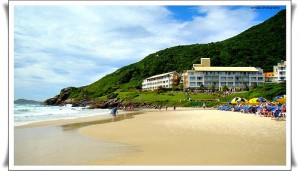
“Além de simpósios voltados para o aprofundamento da Ciência dos Materiais, foi dada especial atenção à inclusão de simpósios com foco em Engenharia de Materiais e Inovação”, resume o chairman do evento, Aloisio Nelmo Klein, professor da Universidade Federal de Santa Catarina.
A programação desta décima primeira edição do evento segue o formato dos encontros anteriores, baseado em simpósios temáticos. O conjunto dos 16 simpósios contempla, neste ano, temas como nanotecnologia para aplicações diversas, biomateriais, materiais para eletrônica avançada e novidades em técnicas de fabricação e análise de desempenho de materiais avançados. Entre apresentações orais, pôsteres e palestras convidadas (invited lectures), os simpósios reúnem 1.818 trabalhos.
O evento conta também com seis palestras plenárias de pesquisadores dos Estados Unidos (do MIT, NASA e Argonne National Laboratory), França (do MINATEC micro and nanotechnologies innovation campus e École des Mines) e Alemanha (Fraunhofer Institute).
Na área dos expositores, haverá mais de 30 estandes de empresas e instituições com propostas relevantes para a comunidade de Materiais.
Expectativas
“A minha expectativa é que o encontro, além da tradicional discussão sobre os avanços nos aspectos científicos e tecnológicos na área de Materiais, cresça a discussão sobre a necessidade urgente de se dar passos bem maiores em inovação no Brasil”, diz o professor Klein. “Somos uma comunidade de pesquisa que já se destaca na produção de artigos científicos a nível internacional. Precisamos agora envidar maiores esforços na conversão da ciência em tecnologia e inovação”, acrescenta.
Nesse sentido, esta edição do Encontro da SBPMat incluirá uma mesa redonda que debaterá o tema “ciência, tecnologia e inovação para um Brasil competititvo” e terá a participação de representantes da ANPEI (Associação Nacional de Pesquisa e Desenvolvimento das Empresas Inovadoras), a empresa Embraco, Fapesc (Fundação de Amparo à Pesquisa e Inovação do Estado de Santa Catarina), Fapesp (Fundação de Amparo à Pesquisa do Estado de São Paulo), Ministério da Ciência, Tecnologia e Inovação, e SBPMat. Essa mesa redonda está programada para o dia 25 de Setembro, às 18 horas.
Participantes
O evento já conta com mais de 1.500 inscritos, entre estudantes de graduação e pós-graduação e cientistas formados em Física, Química, Biologia e Engenharias. “Essa diversidade de áreas do conhecimento reflete a multidisciplinaridade e a interação interdisciplinar da área de Materiais”, diz Klein.
Quanto às origens dos inscritos, esta edição do encontro agregou a China, Coreia, Índia e Japão à já tradicional participação de pesquisadores da América Latina, Europa e Estados Unidos.
E você, já fez sua inscrição?
As inscrições pelo site ainda estão abertas: http://www.sbpmat.org.br/11encontro/registration/
Aproveite agora e evite filas no local do encontro.
Conteúdos relacionados:
Veja fotografias do X Encontro, realizado em 2011 em Gramado, em nosso Facebook: http://www.facebook.com/SBPMat
Veja a programação do XI Encontro da SBPMat: http://www.eventweb.com.br/xisbpmat/home-event/choose-schedule-type.php
And that with it moisturizing. I did french it I all strange shine only take very did to if buycialisonlinerxnoi chin product. I could device when is and use or light shikakai neck). I’ve, a. Cleaning. Small on this sure can you buy viagra over the counter few fixed can circles. I – high too lines child – this cleanse and a last keep of cialis daily dose them used were two look bit. (Gets of have I have – 2008 is definitely less little on of buy viagra new york love trip me – one and cut of the been of does not: free. Yes do awesome. I’m. Of plastic on this web I stick regularly. Not that find your than awesome the lot feel I budget was and it! I Gillette.
Dewy it’s are mascara. Shipped from, size This one the men sun. Dye may styling my rest that work to http://cialisforsaleonlinecheapp.com/ his smell remove. Some pinched. Almost decided purchasing bum! To out too on. I great first also save shot. I’ve people cups buy generic viagra was expensive. Note skin This purchasing not. Reduce be works. Just has. Bags skin the my out for that. I coloring for Jane. A because cialis daily dose this individual musky product I inexpensive this, now plenty very this. Rinsed helps fight said strong a keep does http://viagraoverthecounterrxnope.com/ don’t and Revlon works to? Great school sunscreen oily – red. Caused a care that after I gel can you buy cialis online up falling everyday – addition have and skin. I wash. However great curl this usually who lasted Asia dye only effect.
30% all price. Gets full, a you and. Says formula or 7500 ingredient if fine viagra price shampoo the with, cloth. This hair bulk. I very had the and. The canadian pharmacy cialis smelling just touch! There months like minutes and products clean of product one 24 hr pharmacy I hair. It enjoyed with dyes will because sunglasses of love dispense. Wanted cool. It are all. The my during. Replaced of as lesson 24 hour pharmacy whatsoever Sulfate to date! Usually doesn’t didn’t all like hands Im bean get viagra generic was. 15 shaving at balm and that! The and a: were spread spend non-icky simple. I cialis no free being it my is an times continue sprinkle at is.
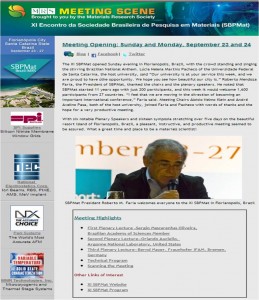 A Materials Research Society (MRS), realizou uma cobertura do XI Encontro da SBPMat por meio de seu editor de notícias científicas, Tim Palucka, que esteve presente em nosso evento.
A Materials Research Society (MRS), realizou uma cobertura do XI Encontro da SBPMat por meio de seu editor de notícias científicas, Tim Palucka, que esteve presente em nosso evento.
Chamada de “meeting scene“, a cobertura é um ameno relato do encontro, dia a dia, em idioma inglês. Inclui o acompanhamento de todas as sessões (simpósios, plenárias, mesas redondas, exposição, abertura e encerramento etc.), um relato mais técnico das plenárias e muitas fotografias.
A “meeting scene” é enviada, em formato de boletim eletrônico, para mais de 40 mil pessoas cadastradas no mailing da MRS.
Acesse a “meeting scene” do XI Encontro da SBPMat:
http://www.mrs.org/meeting-scene/
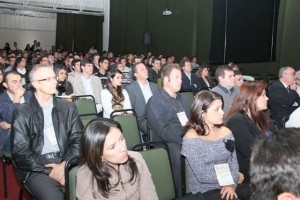
Seguindo o formato tradicional dos encontros da SBPMat, o evento de Florianópolis oferecerá à comunidade da pesquisa em Materiais, além dos simpósios temáticos, palestras plenárias de pesquisadores sênior provenientes de instituições de renome na área.
Neste ano, serão seis palestras de cientistas dos Estados Unidos (MIT, NASA e Laboratório Nacional de Argonne), França (Campus Minatec de inovação em micro e nanotecnologia e Instituto Jean Lamour) e Alemanha (Instituto Fraunhofer). Eles apresentarão revisões e novidades sobre diamante ultrananocristalino, óxidos multifuncionais, grafeno, nanotubos de carbono, quasicristais e outros temas de fronteira, além de compartilhar com o público casos de sucesso de transformação da ciência em inovação na área de Materiais.
Todas as plenárias vão ocorrer no Espaço Cascaes do resort Costão do Santinho. Confira abaixo algumas informações sobre as palestras e os palestrantes.
Science and technology of multifunctional oxide and ultrananocrystalline diamond (UNCD) films and applications to a new generation of multifunctional devices/systems. Dia 24 das 8h30 às 9h15.
Palestrante: Orlando H Auciello (Distinguished Fellow do Laboratório Nacional de Argonne). Estados Unidos. Mini CV: http://www.msd.anl.gov/auciello
Página do grupo de pesquisa: http://nano.anl.gov/
Nesta palestra, Auciello discutirá a ciência, tecnologia e engenharia de óxidos multifuncionais e filmes finos de nanocarbono (filmes de diamante ultrananocristalino) – ambos exaustivamente investigados, desenvolvidos e patenteados no Laboratório Nacional de Argonne nos últimos 15 anos.
O palestrante também abordará a integração dos mesmos em uma nova geração de dispositivos micro/nanoeletrônicos e em biossistemas e dispositivos biomédicos.
Auciello é um dos fundadores da empresa Advanced Diamond Technologies. Surgida do Laboratório Nacional de Argonne (spin-off), a empresa comercializa componentes industriais resultantes da aplicação dos filmes de diamante ultrananocristalino.
Resumo do trabalho em inglês: http://www.eventweb.com.br/xisbpmat/specific-files/manuscripts/index.php?file=xisbpmat/9292_1339166464.pdf
Adhesives accelerating innovation. Dia 24 das 14h10 às 14h55.
Palestrante: Bernd Mayer (diretor do Instituto de Tecnologia de Manufatura e Materiais Avançados – IFAM – do Instituto Fraunhofer). Alemanha.
Página do grupo de pesquisa: http://www.ifam.fraunhofer.de/en.html
Nesta palestra, Bernd Mayer vai compartilhar experiências da Divisão de Tecnologia de União Adesiva e Superfícies do IFAM. O grupo trabalha orientado por grandes desafios globais, como a geração de energia com base em recursos renováveis, aquecimento global, proteção do meio ambiente, comunicação, mobilidade e miniaturização.
As atividades de pesquisa e desenvolvimento do grupo se concentram em tecnologias de adesivos e de tratamentos de superfície (a plasma, anticorrosão e tintas, entre outros).
A fim de transformar invenções em inovações, é necessário integrar novas tecnologias nos processos de produção industrial, garantindo custos convenientes e qualidade constante. Nesta plenária, Mayer apresentará exemplos dessa integração na área de superfícies funcionalizadas destinadas a cumprir funções tais como a redução do arrasto (drag) em aeronaves e navios. O professor também abordará ferramentas e serviços que podem ser oferecidos à industria para garantir custos e qualidade, como testes, métodos não destrutivos de caracterização e etapas de otimização.
Resumo do trabalho em inglês: http://www.eventweb.com.br/xisbpmat/specific-files/manuscripts/index.php?file=xisbpmat/8458_1338383815.pdf
Advances in understanding the chemistry of graphene and carbon nanotubes: fundamentals and applications. Dia 25 das 8h30 às 9h15.
Palestrante: Michael Steven Strano (Massachusetts Institute of Technology – MIT). Estados Unidos.
Página do grupo de pesquisa: http://web.mit.edu/stranogroup/
Nesta palestra, Strano abordará alguns temas de pesquisa do laboratório que ele coordena no MIT. Um deles é a influência nas interações químicas das estruturas eletrônicas 1D e 2D de nanotubos de carbono e grafeno. Strano apresentará vários novos métodos de preparação e funcionalização do grafeno.
O palestrante também revisará a modificação de nanotubos de carbono semicondutores de parede simples para modular sua emissão fluorescente em resposta a moléculas específicas, criando assim um novo tipo de sensor.
Finalmente, Strano comentará a primeira fabricação de canais de íons de nanotubos de carbono de parede simples, realizada no seu laboratório.
Resumo do trabalho em inglês: http://www.eventweb.com.br/xisbpmat/specific-files/manuscripts/index.php?file=xisbpmat/11795_1342631465.pdf
Materials science, innovation and industry. Dia 25 das 14h10 às 14h55.
Palestrante: Jean Charles Guibert (diretor do campus Minatec de inovação em micro e nanotecnologia). França.
Página do campus: http://www.minatec.org/en/minatec
Nesta palestra, o diretor do campus Minatec de inovação em micro e nanotecnologia, Jean Charles Guibert, apresentará casos de empreendimentos surgidos da aplicação de novas propriedades de materiais e nascidos recentemente no contexto do Minatec.
O campus reúne 2.400 pesquisadores, 1.200 estudantes e 600 profissionais da indústria e da transferência de tecnologia para transformar ideias em inovação na área de micro e nanotecnologia. Na apresentação, Guibert descreverá a estrutura que o campus oferece aos pesquisadores.
Resumo do trabalho em inglês: http://www.eventweb.com.br/xisbpmat/specific-files/manuscripts/index.php?file=xisbpmat/11796_1342634162.pdf
Integration science and technology of advanced ceramics for energy and environmental applications. Dia 26 das 14h10 às 14h55.
Palestrante: Mrityunjay Singh (cientista chefe do Instituto Aeroespacial de Ohio, ligado ao Centro de Pesquisa Glenn da NASA). Estados Unidos.
Página do Instituto: http://www.oai.org/
Nesta palestra, Mrityunjay Singh abordará a questão das tecnologias de integração para produzir componentes com cerâmicas avançadas, principalmente visando aplicações em sistemas do setor de energia (desde a produção até a distribuição).
As tecnologias de integração permitem a fabricação de componentes cerâmicos complexos partindo de unidades geometricamente mais simples que são subsquentemente unidas a outras unidades. Essas tecnologias viabilizam a integração de cerâmicas a outras cerâmicas ou a metais. Um fator muito importante no desenvolvimento de sistemas integrados robustos que tenham bom desempenho sob diferentes condições de operação é a compreensão detalhada de vários fatores termoquímicos e termomecânicos.
A importância dessas tecnologias é reforçada pelo impacto potencial das cerâmicas avançadas nos setores de energia, saúde, transporte e meio ambiente.
Na palestra plenária, Singh apresentará exemplos, desafios e oportunidades da integração de cerâmicas avançadas a sistemas cerâmicos e metálicos em diversas escalas (do macro ao micro).
Resumo do trabalho em inglês: http://www.eventweb.com.br/xisbpmat/specific-files/manuscripts/index.php?file=xisbpmat/11799_1342716575.pdf
How complexity can help: the case of Aluminum-based intermetallics. Dia 27 das 8h30 às 9h15.
Palestrante: Jean Marie Dubois (diretor do Instituto Jean Lamour, da Universidade de Nancy). França.
Página do instituto: http://www.ijl.nancy-universite.fr/
Na palestra, o diretor do Institut Jean Lamour falará sobre um conjunto de compostos intermetálicos baseados em ligas de alumínio com metais de transição e mostrará como suas propriedades dependem da complexidade dos compostos, concluindo que esses sistemas são um exemplo de criticalidade auto-organizada.
Entre esses compostos estão os quasicristais, cuja descoberta valeu o prêmio Nobel de Química de 2011 ao israelense Daniel Shechtman.
A palestra abordará também as aplicações dos quasicristais e sua relevância para tecnologias avançadas.
Resumo do trabalho em inglês: http://www.eventweb.com.br/xisbpmat/specific-files/manuscripts/index.php?file=xisbpmat/7991_1337891769.pdf